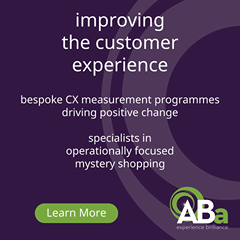Comment: Don’t turn the page on catalogues
Freemans has finally succumbed to ditching its printed catalogue after almost 120 years, which follows Argos who abandoned its big book in 2021 after nearly 50 years, as they both acknowledge this is a digital-first world where the catalogue represents something from a bygone era.
Ann Steer, CEO of Freemans, says: “We need to move with the times in response to how customers are shopping these days. The transition of digital means we can serve today’s families with even more choice of great value items, all at the swipe of a phone screen.”
The demise of its catalogue is part of its ongoing journey to reinvent itself as a digital pure-play. But I’m not so sure about this strategy. Surely the best move would be to operate as a multi-channel business that includes as one of its channels some element of paper-based communication/sales tool.
The value of printed materials was even understood in the very early days of e-commerce when many online-only businesses distributed compact physical catalogues as a promotional tool to drive customers to their websites They recognised the value of this old-school channel complementing their new-fangled digital activities.
I can recall receiving printed catalogues from gift retailer Firebox whose Shot Glass Chess Set was no doubt helped on its way to becoming a mega hit because of its printed materials. (For those interested, the chess pieces were shot glasses and if you gained a piece then you had to down a shot).
The Freemans catalogue included a few thousand items in contrast to the 55,000 on its website so it seems to have been caught between two camps in recent years – being neither a catalogue that replicates all the range online nor one that is focused on highlighting a small number of specific items.
Freemans suggested customers were now taking inspiration from phones and social media rather than from physical catalogues. Research suggests otherwise and shows the value of printed productions. The company should therefore be looking to create more streamlined catalogues or brochures that prompt an engagement with the customer base.
As many as 76% of consumers said catalogues or product brochures give them ideas for things to buy, according to Marketreach, which also found 55% bought something they saw in a catalogue within the past year. Within the fashion category as many as 23% of recipients of such catalogues said they led to a purchase and a further 33% said they were still considering a purchase at the time of the interview.
The effectiveness of these catalogues can be boosted by distributing ahead of peak events such as Mother’s Day and Easter Day. I received my first printed Christmas catalogue for 2023 this week and I’m likely to make a purchase. What can also boost engagement is the use of QR codes in catalogues, which were not available to the likes of Freemans and Argos over their many decades in catalogues and which help deliver a seamless multichannel journey.
Catalogue-based retailers were also historically constrained with the high cost of production of printed materials that demanded they achieve certain sales per square inch. Every inch of the catalogue had to justify its existence, which meant there was little opportunity to include rich, inspirational content. There were experiments with hybrid magazine/catalogue formats – dubbed ‘magalogues’ – but these invariably failed to deliver on the sales per square inch metric.
Thankfully we’ve moved on from this period and retailers can today create beautiful printed materials based on a soft, rather than aggressive, selling approach. I’m sure when Freemans moves on from defending its decision to curtail its big book catalogue and plough a digital pure-play channel it will reassess the value of paper and return to printed materials. Especially when it sees the cost of digital advertising today.














